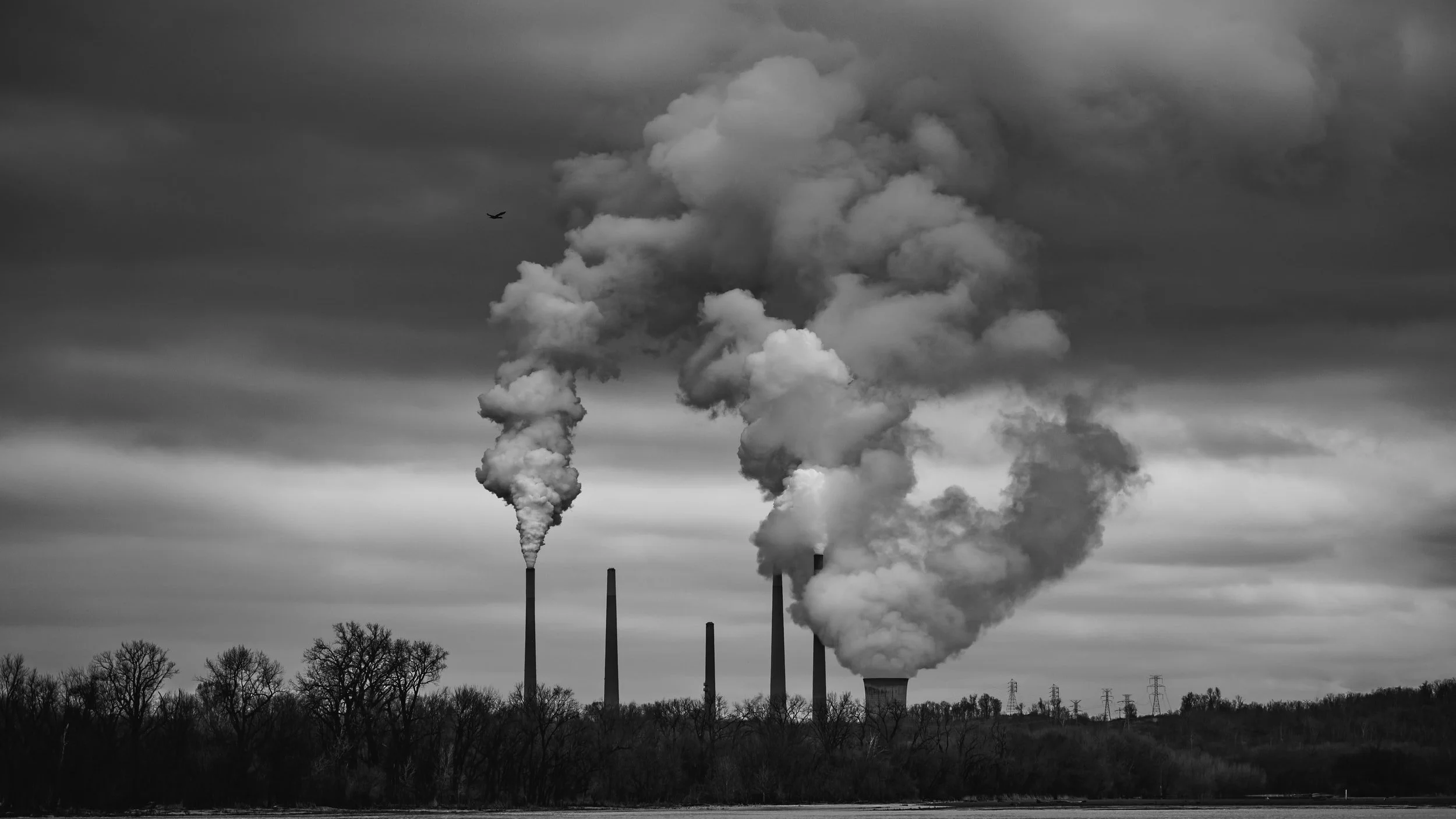Waking Up to Air Pollution
2022 Center for Shared Prosperity Launch Project
Background
Low cost air monitors have the potential to empower communities with real-time hyper-local air quality information. This information can help individuals limit personal/family exposure, while supplying a gateway for them to advocate for better regulation/enforcement and establish a regional culture of “clean air expectation.” A persistent and well-funded program to provide and support such monitors freely to community members (one per square mile in Allegheny County) could create a pathway for valuable exchange of products/services for hyper-local, intensely personal, and persistent community feedback on issues that include but would hopefully extend well beyond air quality.
Once community needs are assessed, portable air cleaners and masks could provide remedies to some of the pollution challenges uncovered by the program. Air pollution awareness and mitigation may improve quality of life, improve health outcomes, reduce medical expenses, increase cognitive performance, improve student attendance and performance, and make our region more attractive for those who live here and for those who are considering living here.
Challenges
Limitations of Existing Air Monitor Infrastructure
Allegheny County is famous for problematic levels of air pollution, particularly during frequent weather inversions (despite evolving regulations designed to address the worst of such episodes). While air quality has improved over the past few decades, the region as a whole still ranks poorly compared to other counties in the United States. Furthermore, many of the most polluted areas are populated by people with low wealth and people of color, who are often impacted by poor air quality more than more affluent and whiter communities. While Allegheny County has more reference-quality air monitors deployed than most other counties, many do not share minute-to-minute updates, do not operate 24x7, and have significant geographical gaps in coverage. Coverage gaps may lead to blind spots when considering resource allocation and attention from regulatory agencies like the Allegheny County Health Department, PA Department of Environmental Protection, and the US Environmental Protection Agency. This misallocation could lead to lower health/performance outcomes across the county, but particularly in environmental justice areas.
Neighborhoods May Limit Connectivity and Opportunity
Allegheny County contains vibrant and distinct neighborhoods and many smaller municipalities that are valuable parts of the regional landscape but that quality may also act as a barrier to social intermingling. It may also limit the flow of resources and opportunities to isolated and/or underserved communities. Monitor deployment and maintenance activities, in addition to intervention deployments, may encourage relationship building and resource sharing across otherwise isolated neighborhood boundaries.
Fenceline Communities Suffer Most with Fewest Benefits from Polluters
Many industrial workers no longer live in the communities adjacent to (and suffering most from) industrial facilities. This results in the employment income benefits leaving the area while the pollution stays, often with polluting companies paying just enough to local communities to keep their leaders quiet on issues of pollution. Pollution may also keep entrepreneurs and growing companies from locating in fenceline communities, further suppressing economic opportunities.
Regulators Overlooking Opportunities
The Allegheny County Health Department (ACHD) is currently working to leverage new low-cost air sensors in the Mon Valley to get a better handle on pollution trends and (hopefully) place additional reference monitors if warranted. This is a slow process and could potentially be informed by low cost monitors deployed by the community across the whole of Allegheny County, not just the select few locations identified by the Health Department. It is also unclear if the ACHD will leverage new monitor data at all. Community deployed monitors could keep pressure on the ACHD as they recognize they don’t have the only viable source of hyper-local and real-time monitoring information. An ongoing community monitor network could also keep pressure on the ACHD after their own low-cost sensor network deployment is complete.
Challenges with Adoption of Portable Air Cleaners and Masks
Community experience indicates that many people are unwilling to use portable air cleaners and masks, even if offered for free. We will need to explore ways to make these powerful interventions more interesting and useful to community members. It is possible that encouragement around portable air cleaners and masks could dovetail with COVID-19-related air filtration efforts. Furthermore, we will need to address the likelihood of conflicting guidance for portable air cleaners depending on whether there is more risk of particulate matter, COVID-19, radon, or hot/cold air in a space. A portable air cleaner is not very useful if windows remain open, but heat, radon, and COVID-19 is more easily spread in a space that is not ventilated. It may be appropriate to bring in air from the outside via window-mounted air filter fans, but not if the outdoor temperature is too cold. NOTE: A simplistic analysis indicates that a single portable air cleaner purchased for every individual in Allegheny County would cost about $243,200,000 (1,216,000 people x $200 PAC). $100,000 per year could purchase about 500 portable air cleaners.
Existing efforts/resources
The following list is incomplete, but there are many regional (and beyond) efforts to deploy and educate people about low-cost air monitors. Many efforts are hampered by the cost of purchasing and supporting monitors.
Mark Dixon (on C3 Advisory and a co-author of this project description) has deployed a large number of low cost PurpleAir monitors throughout the region.
ROCIS (Reducing Outdoor Contaminants in Indoor Spaces ) has trained many people on how best to use and interpret data from low-cost air monitors. The organization has also worked with community members to explore interventions, particularly including a range of portable air cleaners (purchased and self-created from furnace filters and box fans).
Fred Bickerton is working on low cost monitor deployment in southern Allegheny County (Elizabeth, Sutersville, Monongahela?)
Women for a Healthy Environment
SWPA Environmental Health Project
ACCAN (Allegheny Country Clean Air Now)
RAND (put up some monitors during the past few years, though not sure if they’re still working on that effort)
CMU
AirViz/CREATE Lab
Triboro Ecodistrict, evolveEA and New Sun Rising have piloted community engagement strategies and projects through the Breathe Easy initiative, funded by the Heinz Endowments
Many individuals at the community level have deployed their own low-cost monitors
The ACHD is exploring potential uses for low(er) cost air monitors.
Possible connections to many other air monitor groups around the country/world
Los Angeles/CA/OR/WA (wildfires)
Central California Environmental Justice Network (https://ccejn.org/2018/09/20/community-based-monitoring/)
Navajo Nation
London
India
China
Africa?
EPA
Distinguish the C3 program from the Air Sensor Toolbox and related efforts by the EPA. ID opportunities for partnership, including EPA reps as direct advisors.
Leveraging the Air Sensor Toolbox
Research Grant: Air Pollution Monitoring for Communities
https://cfpub.epa.gov/ncer_abstracts/index.cfm/fuseaction/recipients.display/rfa_id/587
Potential Areas of Impact
Tools and Validation: Low cost monitors validate the lived experience of polluted communities with data. Monitors also give community members the tools to avoid exposure to highly polluted air during high pollution periods at neighborhood levels. Only one person per neighborhood needs to afford/support an air quality monitor for the entire neighborhood to benefit (with potential global connectivity).
Interventions: Portable air cleaners (both purchased and DIY) and masks may provide low-cost tools to improve safety and protection from particulate pollution, particularly if they are freely available to community members. It is essential to provide pathways to remedy the effects of pollution as monitors are distributed and used more widely, otherwise newfound air awareness will lead more to despair and departure instead of empowerment and advocacy. Air filtration may eventually extend to home, classroom, and workplace HVAC filtration upgrades, 24x7 filtration systems, and beyond. We may also be able to assess regional approaches to providing 100% healthy air to all community members and find that better regulation and enforcement is much cheaper than buying multiple portable air cleaners for all residents.
Community Education and Documenting
Provide scaffolded/coached programs for developing skilled advocates. The program can develop/promote platforms and educational opportunities for advocacy and power structure understanding (i.e. power mapping). Could also develop programs for how to share experiences via activities, role playing, media training, letter-writing guidance, scientific understanding, etc. These could be live in-person, live via Zoom, or pre-recorded audio/video programs.
There are a variety of web and media resources that could be collected to highlight essential air quality information. Examples include: https://breatheproject.org/ and http://rocis.org/general-resources
Document and lift up community voices and experience in relation to air quality issues. Includes but is not limited to individual stories, statistical visualizations, infographics, modeling, etc.
Validation leads to more casual conversations about air quality and more community studies of air quality at the hyper-local level. Also leads to more general community support for such advocacy in locally elected politicians.
Future:
Build towards a future day when low-cost monitors are embedded deeply throughout society and in smartphones and smart watches. Communities will have a deep understanding of how to interpret and leverage such tools to protect personal health.
Communities realize how much money must be spent on portable air monitors to improve air quality in homes, schools, and businesses, they may realize that regional air quality improvements are much cheaper ways to clean individual rooms and cool homes in a clean way. There may also be implications for CO2 and COVID levels in classrooms.

